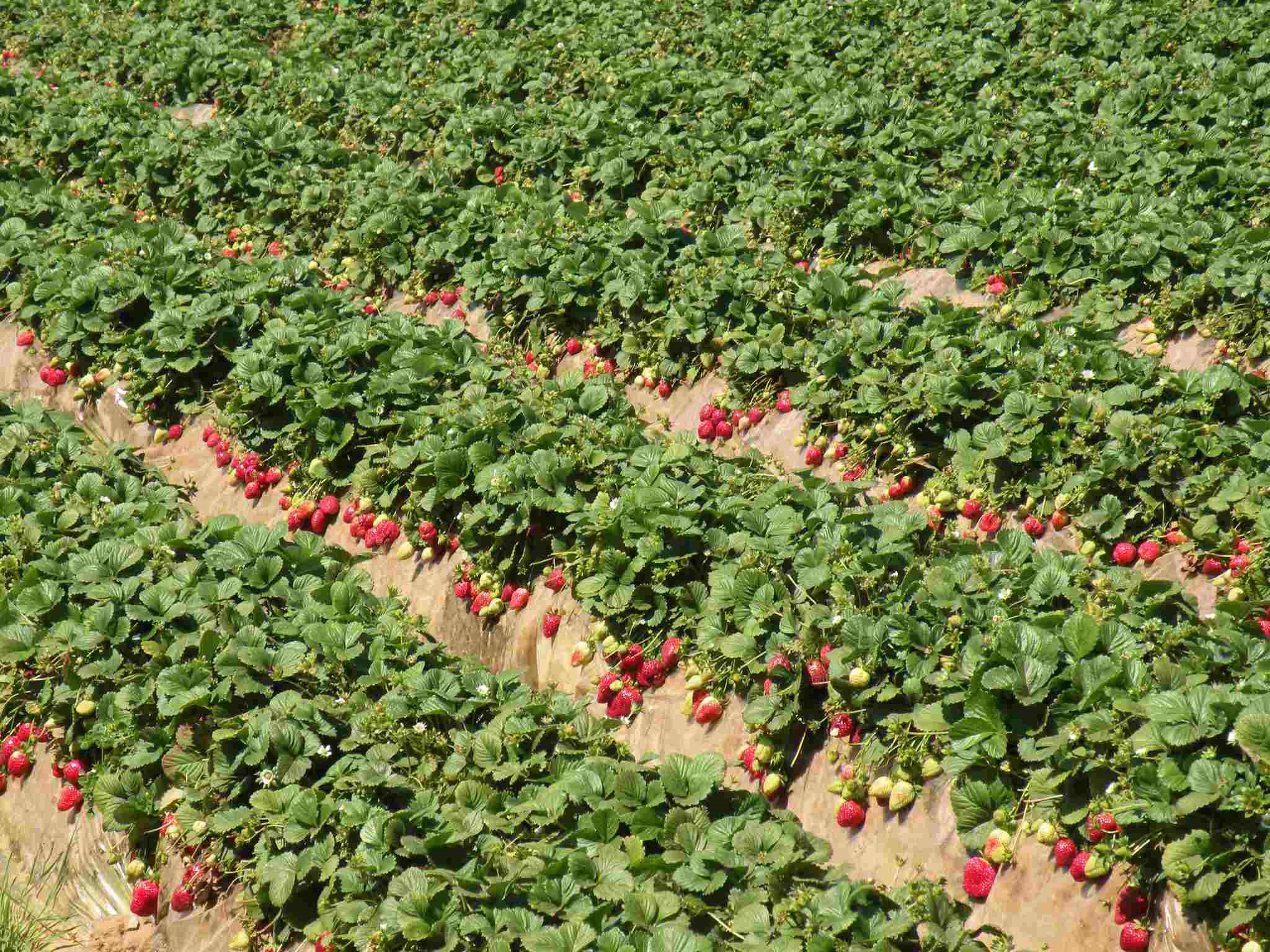Foliar Ca During Fruit Development in Strawberries
April 15, 2020
Agronomics / Background
For strawberry, raspberry and blackberry, fruit calcium (Ca) level is one of the most important factors relating to fruit quality and marketability.
Calcium plays a critical structural role in the formation and stability of both cell walls and cell membranes. High fruit calcium levels have been shown improve berry flesh firmness at harvest. This is due to stronger cell walls at harvest and a decrease in activity of enzymes that degrade fruit pectins. Higher fruit Ca levels have also been associated with delayed ripening of strawberries. As a result, high Ca berries have better shelf life for the fresh market. Soft rots that occur post-harvest, especially Botrytis, will be less prevalent in berries with higher calcium.
Conditions Leading to Ca Deficiencies
Most berries are grown in soils with adequate calcium availability for leaf development. One exception to this can occur in strawberries growing during periods of extensive fog. This greatly diminishes calcium uptake in the leaves and can cause tip burn symptoms on newly formed leaves.
Even in situations where leaf Ca levels are adequate, Ca deficiencies can still occur in the fruit due to the lack of mobility of Ca within the plant. Early in fruit development, Ca will move through the transpiration stream via the xylem directly from the soil into the fruit. Excess early season vegetative growth due to high nitrogen (N) levels or inadequate pruning can lead to an imbalance of too much Ca going to the leaves and not enough into the fruit. Low soil moisture and/or high heat will also diminish Ca uptake from the soil.
As the fruit gets larger, the xylem delivery into the fruit will be cut off and only the phloem supply the fruit. Calcium is completely immobile in the phloem so from this point forward only foliar calcium applications that directly contact the fruit will be able to increase fruit Ca levels.
Desired Ca Tissue Test Values
During mid-season, Ca levels in newly mature leaves should be around 0.75-1.67% in strawberries. In cane berries, samples should be pulled in mid-summer from primocane leaves about 12 inches from the tip and Ca levels should be near the 0.85-1.10% range. However, this may not be a good indicator of how much calcium actually got into the fruit where it is most needed. Analyzing fruit calcium levels can be helpful in predicting Ca related disorders, but it varies a lot between varieties. It is much more reliable to examine past effects of cultural and fertility practices on actual fruit quality parameters like firmness.
Key Application Timings and Rates
The extended bloom and fruiting period of many strawberry and cane berry cultivars means that the application window for foliar calcium sprays is quite large. Generally applications should begin with petal fall of the first set of flowers and continue on at 10-14 day intervals. Applications are most beneficial during high fruiting periods where fruit calcium demand is especially high, or during periods of extended cool, cloudy weather that will diminish calcium uptake from the soil.
BRANDT Products
BRANDT has several foliar calcium formulations that are highly effective and provide good crop safety:
- Foli-Cal®
- BRANDT® Manni-Plex® Cal Zn
- BRANDT Manni-Plex Cal Mag
- BRANDT Manni-Plex Cal-B
These formulations are all complexed with sugar alcohols to improve nutrient delivery.
BRANDT® Organiplex® 8% Ca is an amino acid complex and is approved for organic use.
For all these formulations, 1-2 quarts per acre per application will work well.



